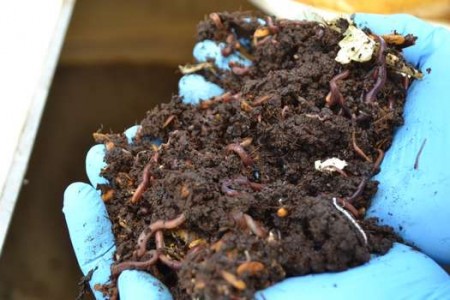
Earthworms are hermaphrodites, that is, the female and the male are united in the same organism. This, of course, does not mean that each earthworm can reproduce itself. The coupling is done through a special procedure where the two individuals unite and then exchange semen which fertilizes the eggs of each earthworm separately. Fertilization results in cocoons being released to the soil. Each cocoon can contain from 2 to 20 earthworms. Up to 100 cocoons can emerge from each earthworm in one year, resulting in up to 1500 offspring. Young earthworms will be sexually mature after three to six weeks. Practically if the environment is ideal the population of earthworms in a composting bin can double in as much as 3 months. The most important factor for the reproduction of earthworms is temperature. Ideally a temperature of 20 to 25 degrees Celsius allows them to reproduce quickly. In any case, even if we do not have ideal temperatures due to heat or frost, the cocoons are kept in the substrate and will hatch when the conditions are ideal.



